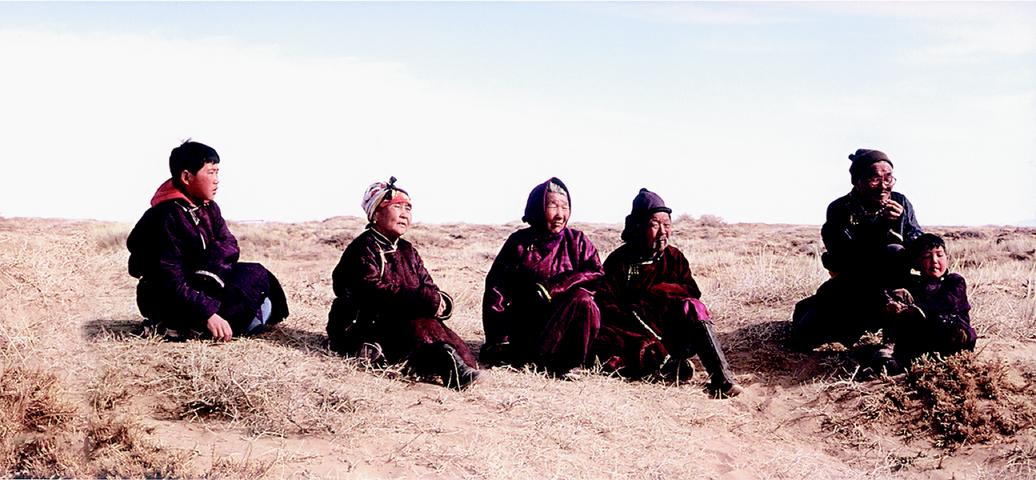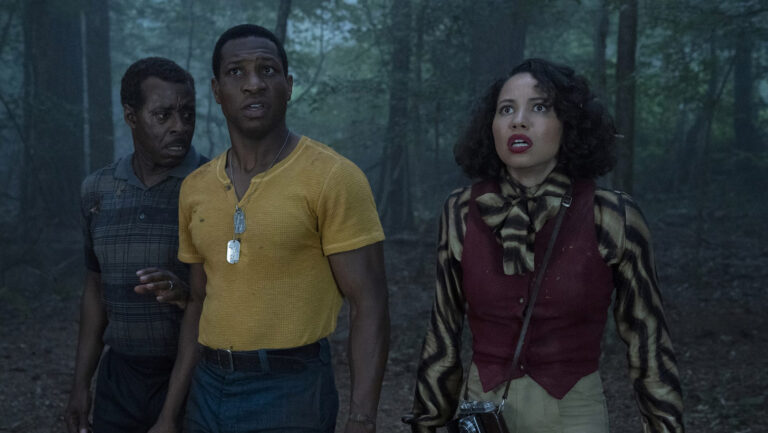The Story of the Weeping Camel turns out to be a story about a weeping camel, rendering the title somewhat more prosaic than it would seem at first glance. The film, not so surprisingly, is produced by National Geographic and is directed by a Mongolian/Italian filmmaking duo that met in film school. Mongolian-born Byambasuren Davaa dragged her pal Luigi Falorni home to central Asia with the express purpose of capturing a ritual she had heard of while growing up. It seems that the nomadic herders of the forbidding Gobi desert believe that when a mother camel rejects her newborn calf, the two can only be reunited through the power of a musical ritual—the strange beauty of which is believed to bring tears to the eyes of the mother camel.
You could view the entire tale as a universal plea for love and acceptance, or you could simply look at it as a beautifully shot, damnably cute animal story in the grand old Disney tradition. Either way, it works.
It should be noted that Davaa and Falorni set out to make a “narrative documentary”—that is to say, they had a firm story in mind before they began shooting. The result is a bit like the classic mother-of-all-documentaries Nanook of the North. There are no actors in the film, only real people, doing what they normally do. But certain aspects of their life are recreated for the camera. The result is a nonfiction film that “reads” like a narrative film. Although nothing was faked for the camera, filmmakers did not shoot hundreds of hours looking for a story to emerge. They went out, found one of a dwindling number of nomadic families and waited for their preselected story to happen.
Sure enough, while documenting the brief birthing season, one female camel had a particularly difficult labor. The result was a stunning, pure-white calf (a rare enough occurrence). Traumatized by her first birth, the mother refused to suckle the calf. To the Mongols, this is serious business. An infant not cared for by its mother is not long for this harsh climate. Baby animals are documentary gold, but the footage of the snowy calf, chasing after its mother with an eerie, mournful cry, verge on heartbreaking.
The film's simple narrative unfolds like a fairy tale or a beloved children's book, full of glorious colors and eye-popping pictures. It's safe to say there are no big surprises in store for viewers, but the film's quiet, observational style is sure to hypnotize. There is no omniscient narrator to enlighten viewers to the usual dry documentary statistics. (“The Gobi desert has an average annual rainfall of only …”) Instead, the filmmakers do a more subtle job of highlighting the tiny details of life in this faraway land: sand dancing in swirls on the edge of a windswept dune, an old woman's hands folding wool into rope with alarming dexterity.
The Gobi is one of the most bitter climates on Earth, and its people are a hearty, weather-worn lot. Life and death are close companions to these simple desert dwellers. And yet, the modern world still paws at their door. When the family's two youngest sons head into “the city” to recruit a violin player for the much-promised musical ritual, they bump into such worldly conveniences as ice cream and television. The seductive pull these objects radiate makes you wonder how many more generations will follow in the difficult nomadic footsteps of their ancestors.
Emotionally assembled and beautifully shot (who'd expect less from National Geographic?), The Story of the Weeping Camel is a haunting look at the lifestyle of a people half a world away, a people so deeply in touch with the rhythms of the planet that even their animals can shed a tear at a good tune.




